Easiest flowers to grow from seed – 8 beautiful blooms to sow this spring
These fuss-free flowers are perfect for beginners
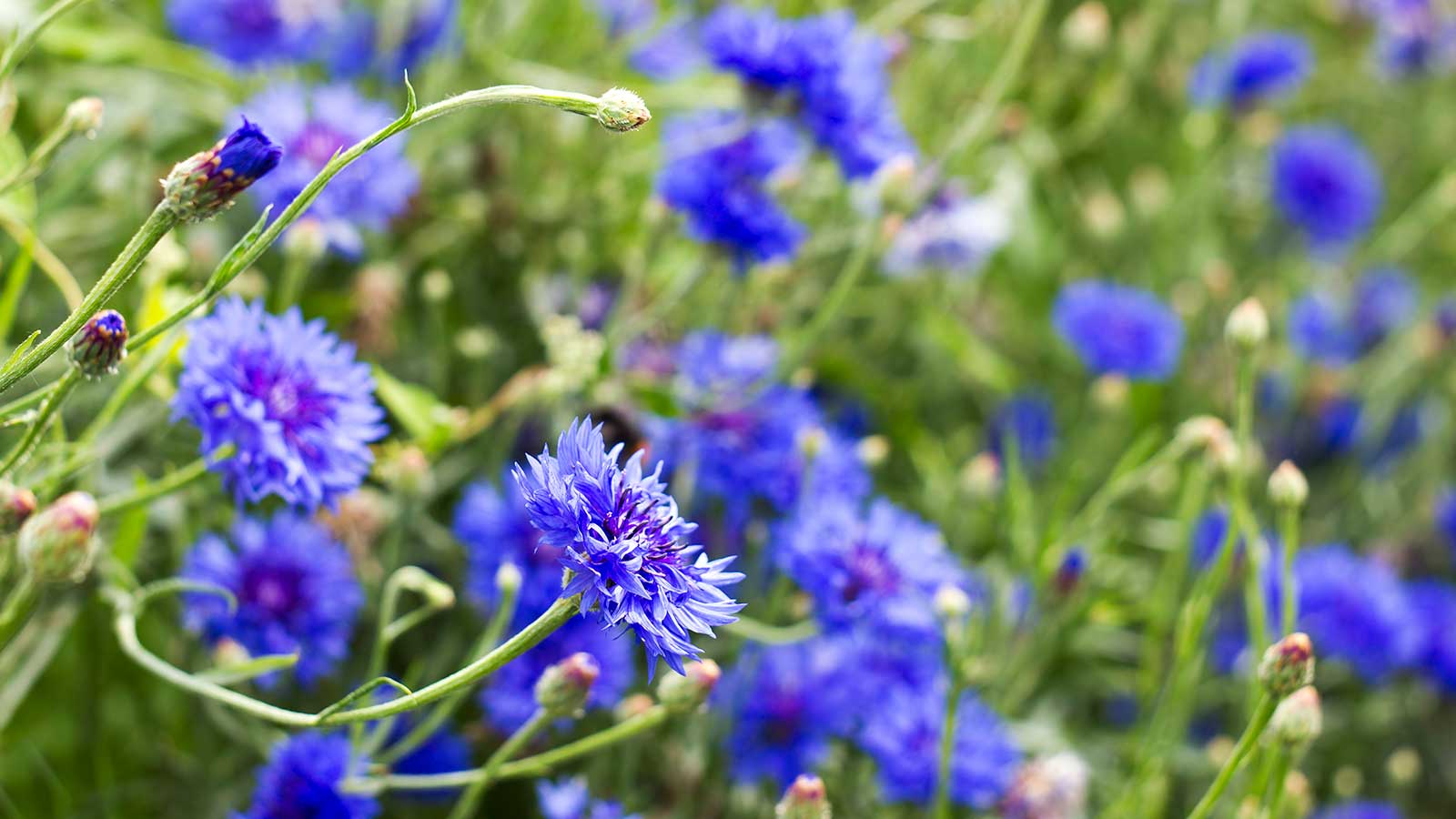

Growing flowers from seed is so fun and rewarding (not to mention, budget-friendly). And despite what you might think, you don't have to be a master gardener to achieve beautiful homegrown blooms.
There are many stunning varieties that are really easy to start from seed, and will reward you with a summer display in a matter of weeks. And while you can start these flowers off indoors for an earlier show, they can also be direct-sown, once the weather has warmed, which requires even less work.
8 pretty picks that are easy to sow and grow
Whether you want to grow fabulous flowers for a cutting garden, a flower bed, or a container display, these choices will make it easy.
1. Nasturtiums
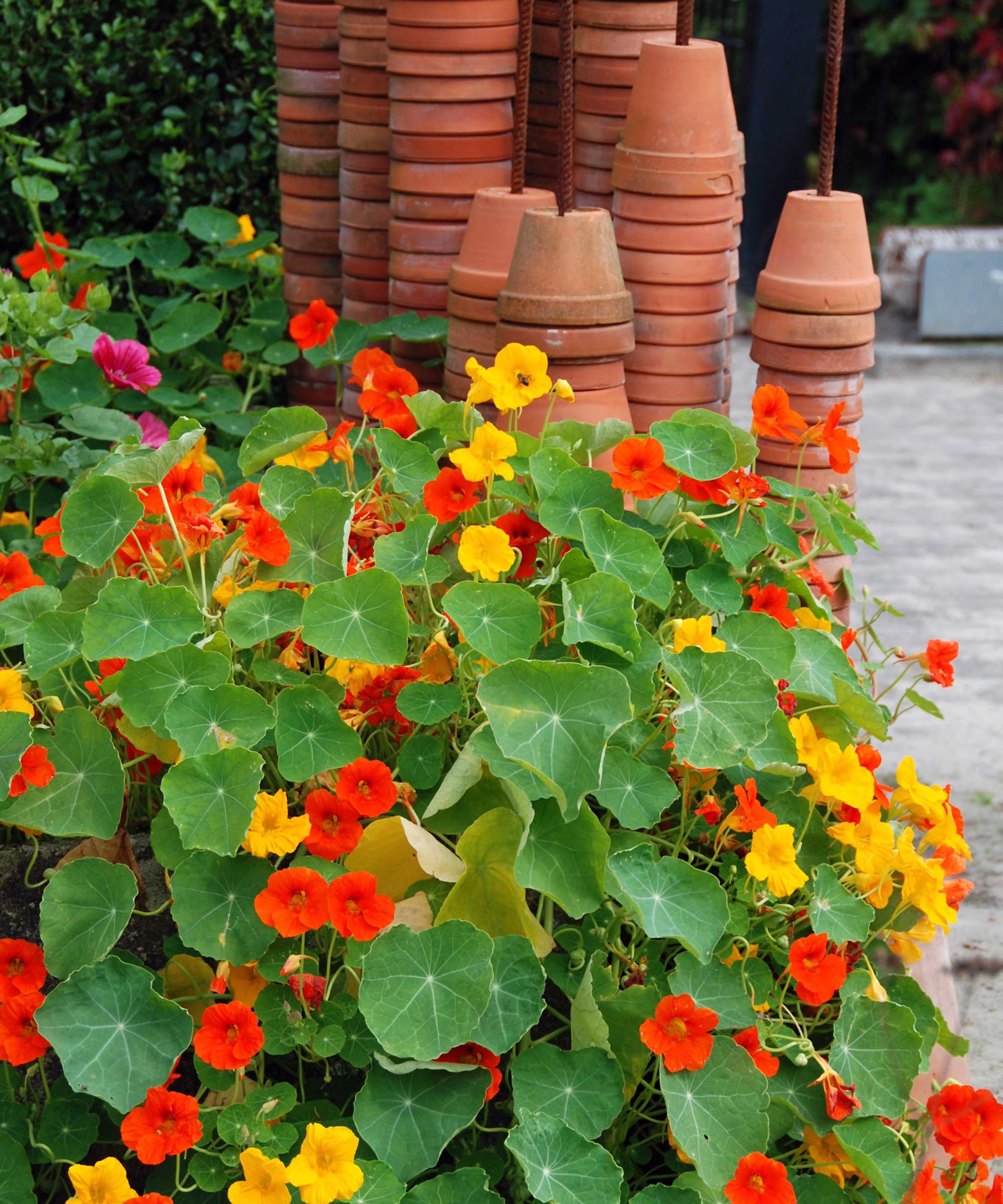
Nasturtiums are fast-growers and produce vibrant flowers
Susan Brandt, the President and Co-Founder of Blooming Secrets, reveals nasturtiums to be one of her favorite flowers, and comments on their well-deserved reputation for being easy to grow from seed.
'They are the perfect plant to grow with your children, as the seed, which is about the size of a pea, is easily handled by small fingers,' she says. 'Once they sprout, nasturtiums grow very quickly and they are also very flexible in that they can be used in containers such as a window box, as a bedding plant, as an annual ground cover, or as a vine climbing up a trellis or cascading over a wall.
'The flowers come in variations of yellow, orange, and red, and while the flowers are typically what gardeners focus on, the foliage is very interesting in its own right,' Susan continues. The leaves look almost like lily pads, and they share the same pepper-like taste as the edible blooms, she adds. 'As a matter of fact, the more sun and heat the plant receives, the spicier its leaves and blooms taste. The blooms and leaves can be used in soups, and they are particularly beautiful when combined with spinach in a salad. You just want to be sure that you don’t harvest the blooms and leaves if you’ve used any pesticides in their vicinity.'
You can direct-sow these seeds straight into the ground outdoors in a sunny spot once frosts have passed. These annual flowers are unfussy about the soil type, as long as it's well drained.
You can shop for a variety of nasturtium seeds from Burpee.
2. Cosmos

Deadhead cosmos to encourage more blooms
'Cosmos have qualities that make them ideal for many parts of your garden and just because they are easy to work with, doesn’t mean they don’t have a lot to offer gardeners of all skill levels,' says Susan.
'Cosmos are attractive to butterflies, hummingbirds, and unfortunately, rabbits who find them to be quite delicious! Old-fashioned Cosmos, such as those found in cottage gardens, usually come in white, pink, and purple colors. Newer varieties have been introduced over the past few years that come in colors such as yellow, orange, and red.' There are also cosmos that have double flowers and smaller varieties that have been bred to flourish in containers, she adds. These 'Double Click Bicolor Violet' cosmos from Burpee are sure to delight with their ruffled petals.
These are good flowers for starting indoors, although you can also direct-sow them when frosts have passed. If sowing them in seed trays, remove the shoot tips to encourage strong side shoots and a bushier form, before transplanting them into individual pots. Grow them on somewhere sunny and warm until it's time to plant them into their final positions outdoors. Once they're flowering, keep deadheading them to encourage more blooms.
'The quickest and earliest varieties take 70 days from seed to flower, but the tall varieties take much longer,' says John Negus, a gardening expert. But if you've planted them late, don't worry – they can flower all the way up into mid-fall.

John has been a garden journalist for over 50 years and regularly answers readers' questions in Amateur Gardening magazine. He has also written four books and has delivered many talks over the years on horticulture.
3. Marigolds
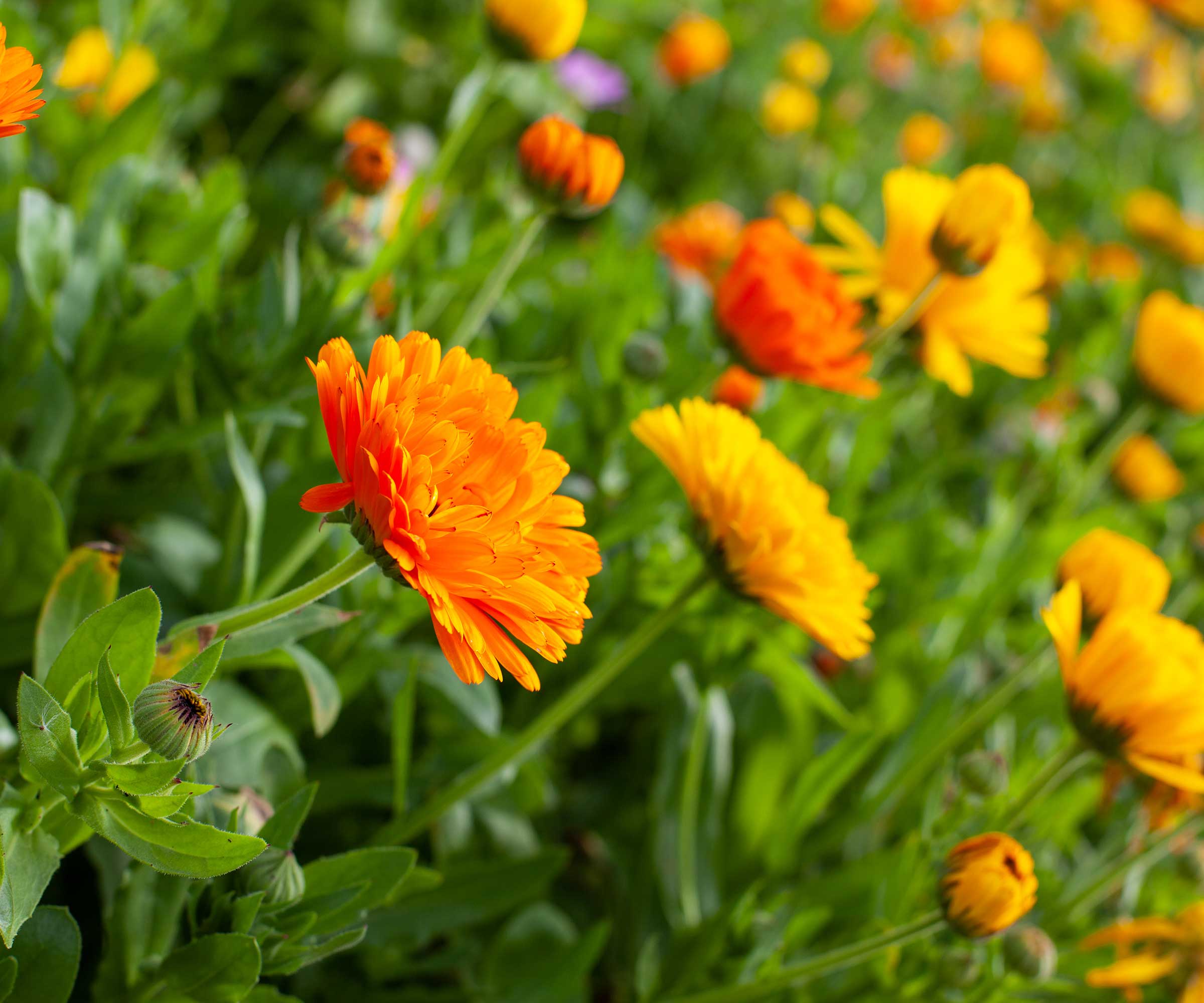
Marigolds are easy to grow
'Marigolds [otherwise known as calendulas] are a cheerful, easy-to-grow flower that will bring a touch of sunshine to any garden,' says Becky Decker from Gardeninghood.com. 'These flowers are not picky about soil type and can be sown directly into the garden in spring.
'To get the best results, make sure to thin them out once they start to sprout so that they don’t overcrowd one another.'
Susan Brandt is also a fan of these flowers. 'Calendulas resemble mums in their appearance, and like mums, they are great in both containers and flower beds.' They have been a popular choice in cottage gardens for generations, she says. 'The colors of the flowers are usually yellow, gold, or orange and they are particularly beautiful when mixed with plants that have blue or purple flowers.
'Once the seeds sprout the plants grow quickly and often will flower in as little as 60 days,' Susan adds.
You can also try collecting the seeds from these plants for more flowers the following year.
4. Cornflowers
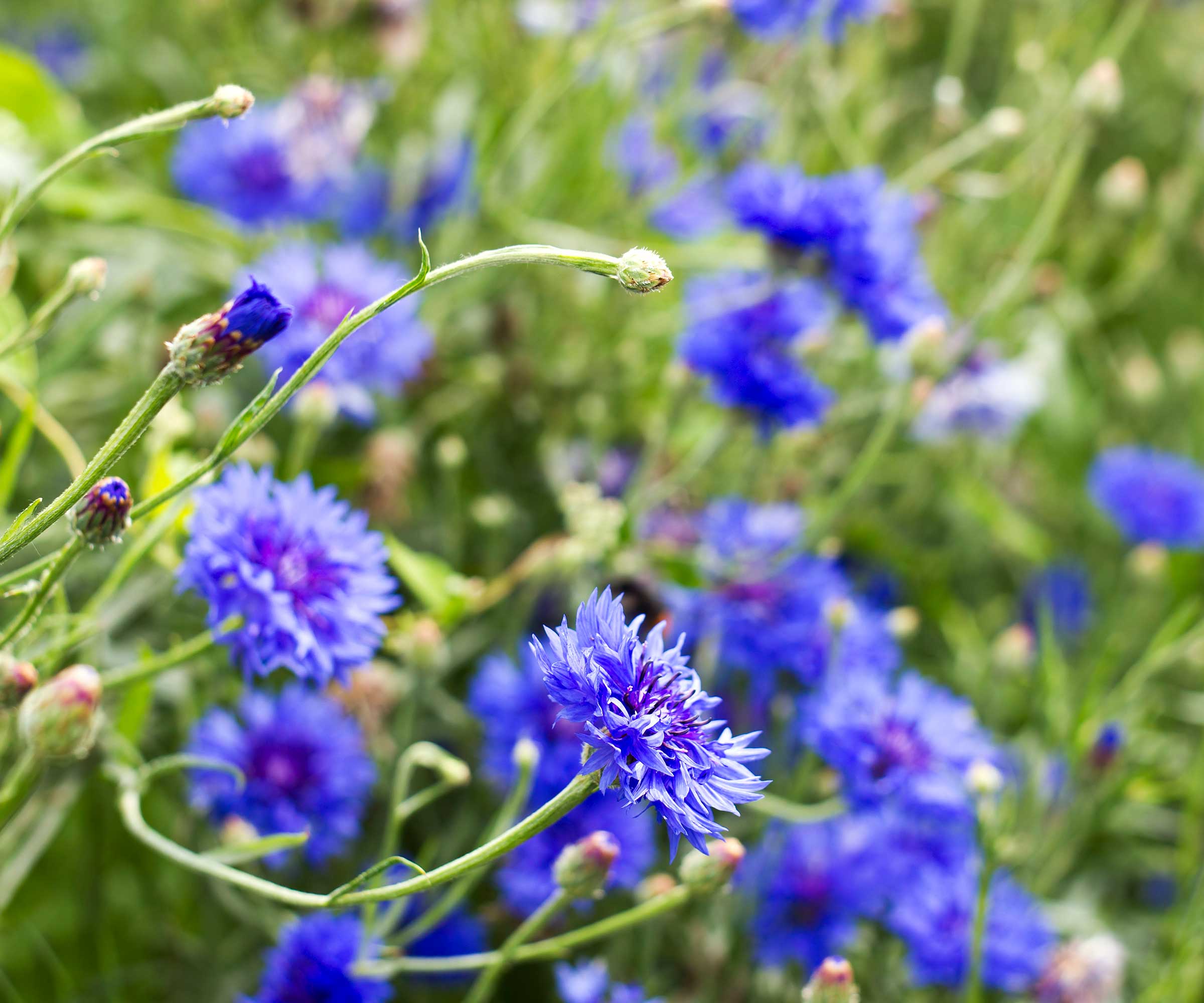
Cornflowers will welcome pollinators to your plot
'These beautiful blue flowers are perfect for adding some color to your garden beds or containers,' says Stephen Webb, Author and Founder of Garden's Whisper, a website specializing in gardening. 'They're also very easy to grow from seed, requiring only minimal care once they've been planted.'
Also known as bachelor's buttons, they are good plants for attracting pollinators, and are often included in wildflower meadow seed mixes. Simply direct-sow them once frosts have passed and keep the soil moist. They should germinate within around 7-10 days.
Deadheading will encourage more flowers, as will watering them during dry periods. If you leave some of the flower heads on, they will self-seed.
The 'Blue Boy' cornflower is a classic variety, available from Burpee.
5. Sunflowers
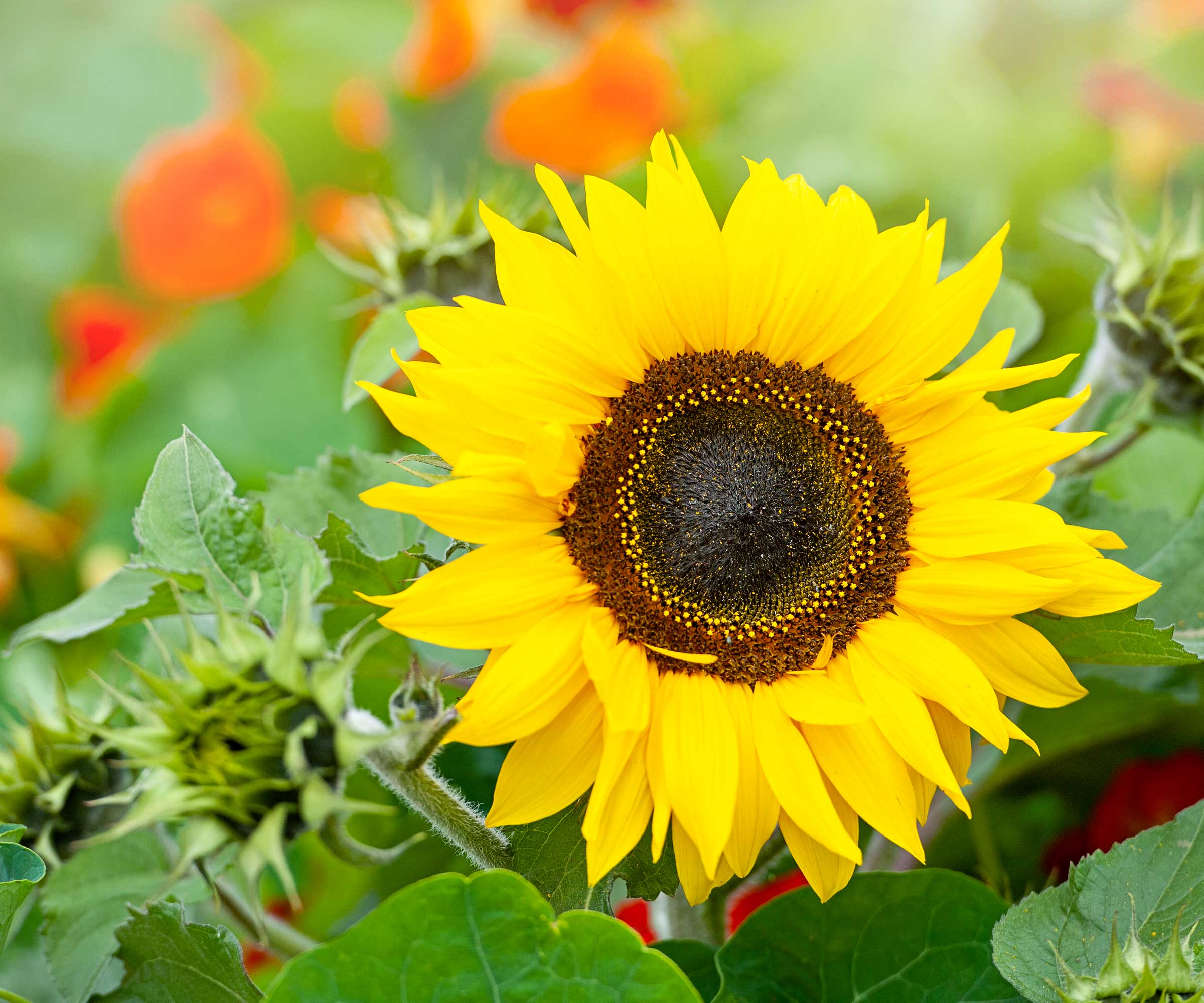
Sunflowers can grow super tall depending on the variety, and some need supporting with stakes
Sunflowers are easily one of the best plants for beginners. 'The large seeds of the sunflower are very easy to sow either in pots or straight into the soil where you want the plants to grow,' says John.
Plant the seeds in spring, for flowers from the middle of the summer to the late fall, says Becky Decker. 'To ensure success, be sure to soak the seeds overnight before planting and keep them moist during their first few weeks of growth,' she adds.
Tom Monson, the Owner of Monson Lawn & Landscaping, also recommends these cheery bloomers, advocating them as a 'must-have for any garden'.
'Sunflowers need plenty of sun, so plant them in a spot that gets at least eight hours of direct sunlight each day,' he advises.
If sowing outdoors, it's a good idea to keep an eye out for slugs, and put deterrents down where possible to protect the vulnerable seedlings as they appear.
'Sunflower seeds have a life of more than ten years if kept cool and dry, such as in a sealed plastic bag in a fridge,' says John. However, if you've found an old packet of seeds and want to give them a try, it's worth checking their viability first. Do this by sprinkling a few onto a sheet of damp kitchen paper placed in an open ice cream container, positioned in a warm place, such as on a boiler or in an airing cupboard, John instructs. 'If, within a week or so, the majority of seeds germinate and you are aware of tiny sprouts, the remaining seeds will still be very much alive and will grow well for you.'
Try growing 'Fire Catcher' sunflower seeds, from Burpee, for beautiful bicolored blooms.
6. Poppies
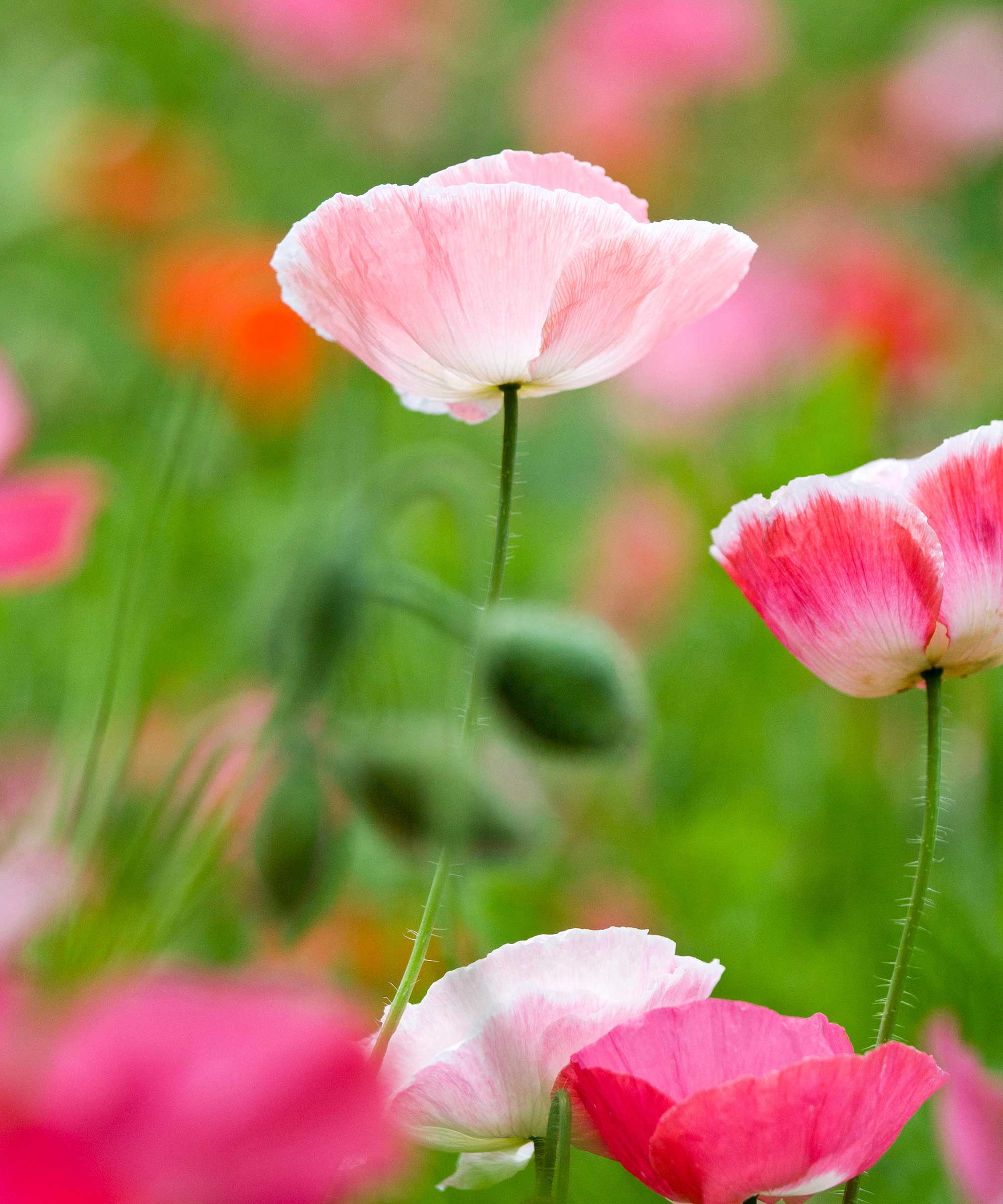
Growing poppies is as simple as scattering a packet of seeds onto soil, and keeping the area moist
'Poppies are another great choice for the beginner gardener,' says Becky Decker.
They are best sown directly outdoors in the fall or in winter, but you can also sow them in early spring. Plant them in a sunny, sheltered spot.
'Make sure to keep your poppy seedlings moist, since they require plenty of water to germinate. Once they start to sprout, thin them out to ensure that they get plenty of room to grow.'
7. Zinnias
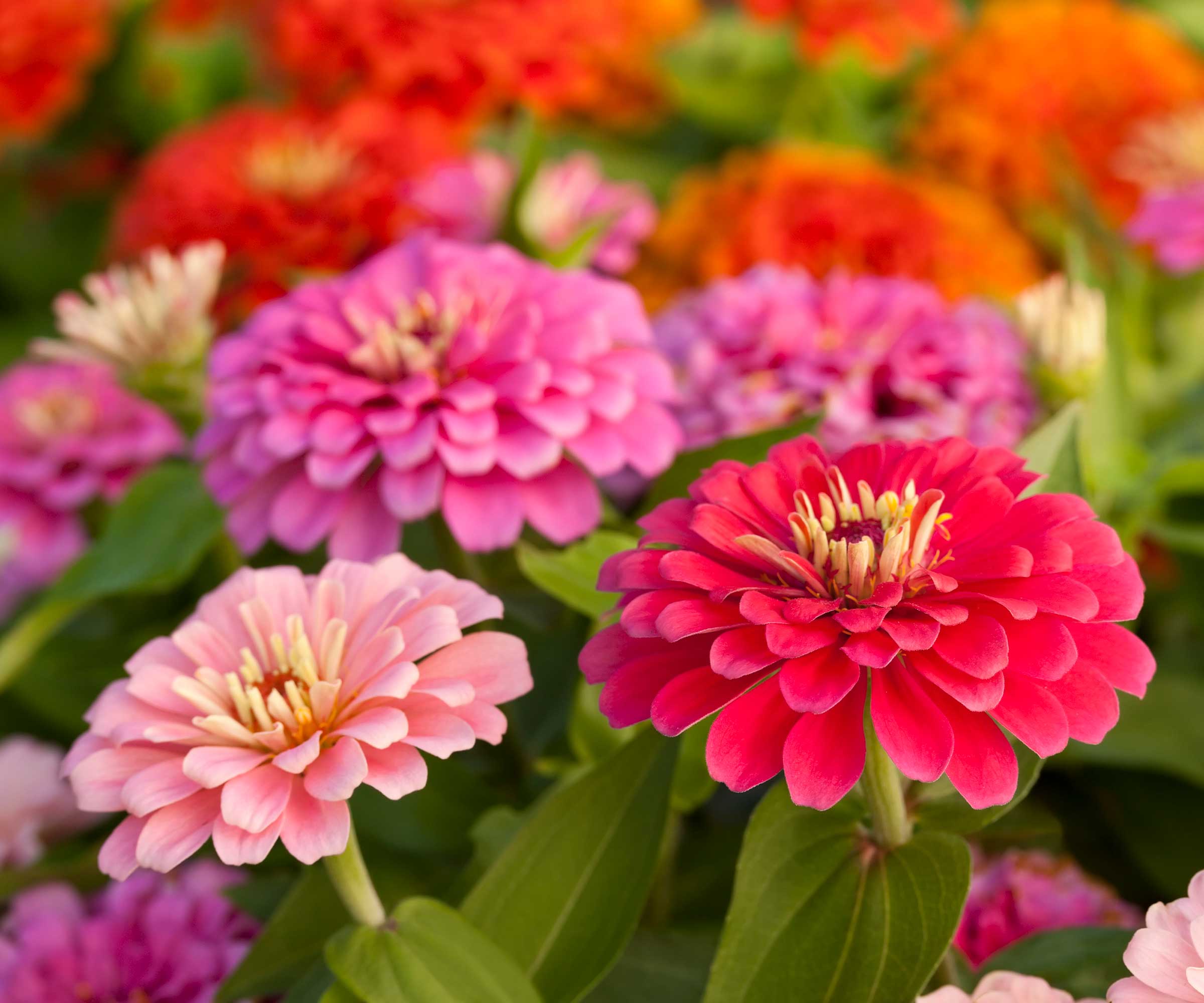
Zinnias bring vibrant shades to the summer garden
Zinnias dazzle with their range of jewel-like colors, and butterflies and bees adore them. Again, these can be sown directly outdoors once temperatures have warmed and frosts have finished. They thrive in a sunny spot in well-draining soil. Thin the seedlings out as they grow.
Alternatively, you can sow these flowers indoors for an early start, about six weeks before the last expected frost.
Once they're established, these plants are drought-tolerant, meaning they won't require much maintenance. However, deadheading is worth doing to encourage more blooms.
8. Sweet peas
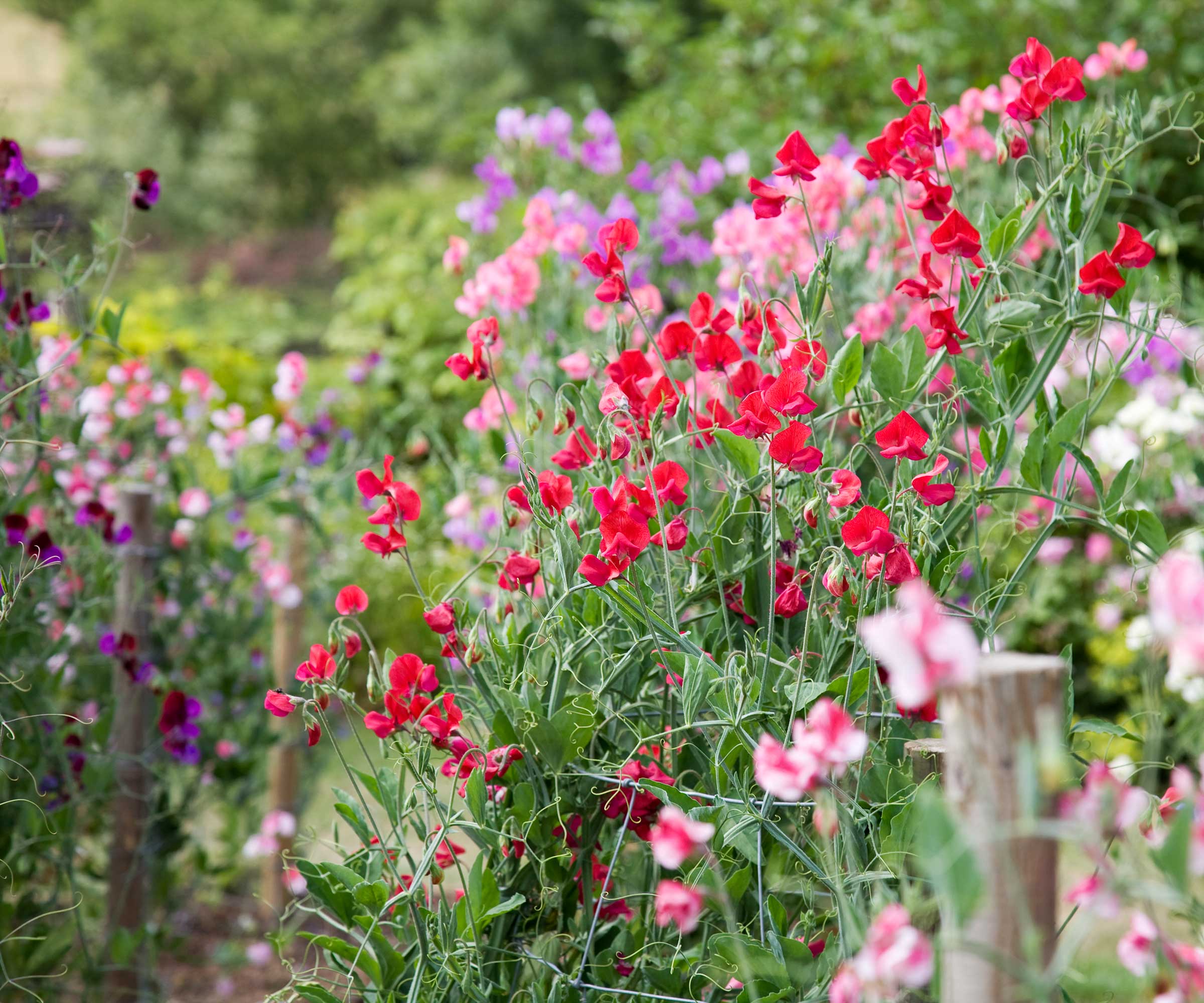
Sweet peas are well-loved for their fabulous fragrance
Sweet peas have large seeds that are easy to handle, and sowing them is simple.
Many gardeners choose to start them indoors. Growing them in deep trays or modules, such as these Tierra Garden root trainers from Amazon, means you won't need to disturb the long roots too much when transplanting them.
Pinching out the tips of your sweet pea seedlings will help them develop more stems, meaning more flowers. And if you're growing them in a greenhouse, stand them on a bed of gravel to keep slugs and snails away, recommends John.
Once the temperatures are warmer, you can plant them out, ensuring you harden them off, first. 'Before planting out, improve the soil where you want your sweet peas to grow by digging in lots of well-rotted compost or manure,' advises John. And once they're blooming, the more you pick, the more flowers will be produced.
Alternatively, you can direct-sow them in spring – but keep an eye out for slugs.
Even if you're brand new to gardening, have a go at growing these flowers from seed – you'll soon be rewarded with a gorgeous display in your backyard.
And if some don't work out, don't be discouraged. You can always try again next year (or even sow a fresh batch if it's early enough in the growing season). In the meantime, plug plants bought from garden centers will offer a quick and easy flower fix.
Sign up to the Homes & Gardens newsletter
Design expertise in your inbox – from inspiring decorating ideas and beautiful celebrity homes to practical gardening advice and shopping round-ups.

Holly started writing about gardening five years ago, and she is a regular contributor to Homes & Gardens. She has also written many gardening features for Woman & Home and Real Homes, too. She has previous experience as a professional gardener, where she helped to plant and maintain private gardens. Holly has also looked after allotment plots over the years and loves to grow her own flowers and veggies from seed. In her spare time, she enjoys visiting local gardens, botanical drawing, and tending to her ever-growing collection of houseplants.
-
 Ina Garten's storage pantry is an insightful window into all of the best cookware used by the chef – and it's easy to recreate on your kitchen shelves from $48
Ina Garten's storage pantry is an insightful window into all of the best cookware used by the chef – and it's easy to recreate on your kitchen shelves from $48The beautiful dishware in The Barefoot Contessa's Hamptons pantry showcases the tools she uses most often to cook – this is exactly how you replicate it
By Sophie Edwards Published
-
 Extend the lifespan of your appliance with 5 simple but crucial washing machine maintenance tips
Extend the lifespan of your appliance with 5 simple but crucial washing machine maintenance tipsFrom cleaning the filters to keeping the door open, experts reveal the washer tips they swear by
By Andy van Terheyden Published